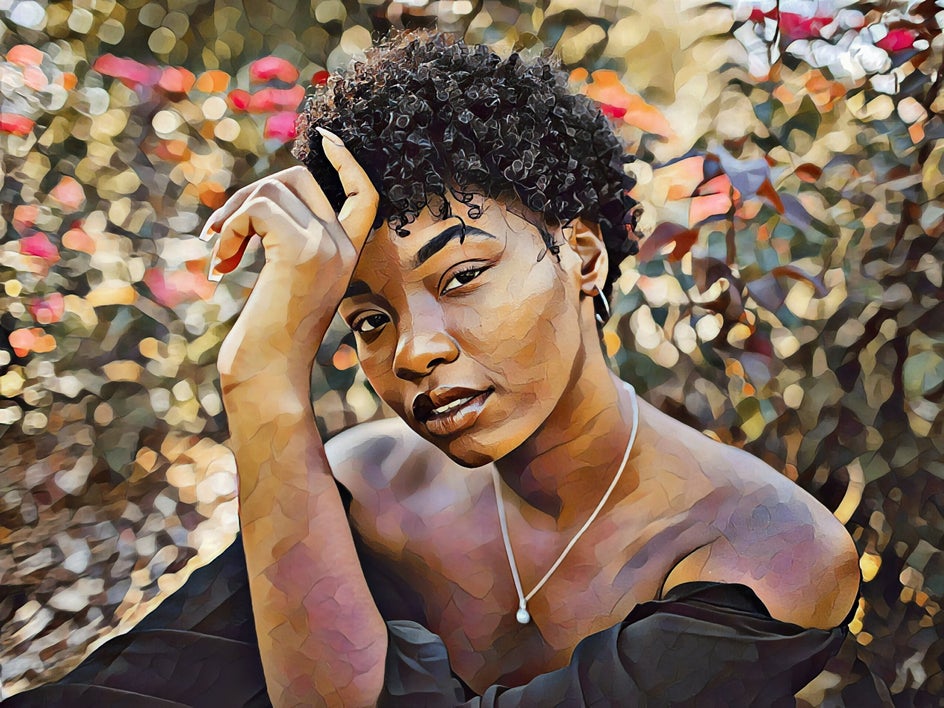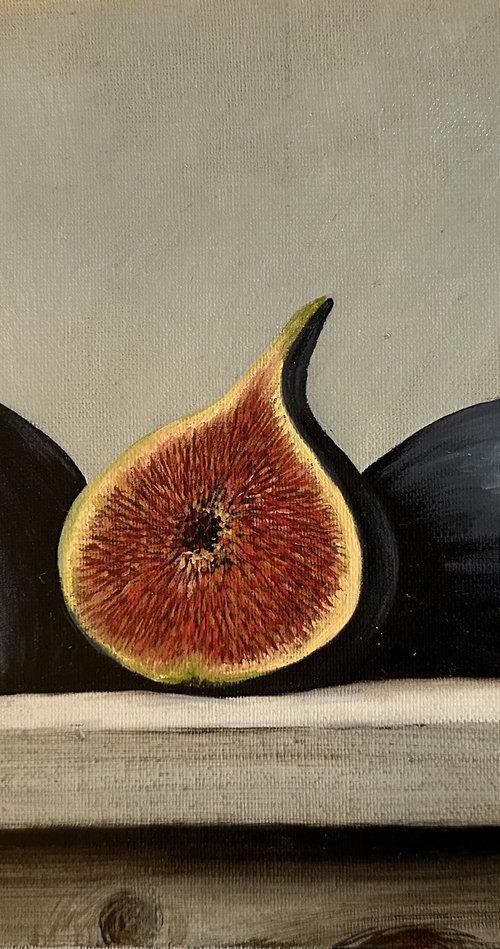Checking out All About Oil Paints: A Guide to Understanding Their Beauty and Value
Oil paints have captivated audiences for centuries, offering a peek into the imaginative mastery of different ages. Their abundant history is linked with innovative strategies and extensive psychological expression. Understanding the materials and techniques behind these artworks can enhance admiration. Additionally, the market for oil paints presents chances for collection agencies and financiers alike. As one discovers this fascinating globe, the concern arises: what makes an oil painting genuinely useful?
The History of Oil Paint: A Trip Via Time
Although oil paint has origins that date back to ancient times, it truly prospered during the Renaissance, when musicians found its adaptability and abundant shade capacity. Early examples can be traced to the 7th century, with strategies progressing significantly across societies. The medium became popular in Northern Europe in the 15th century, especially with the jobs of musicians like Jan van Eyck, who spearheaded its use for in-depth realistic look and lively colors. This duration marked a departure from tempera paints, permitting higher deepness and texture. As oil paint spread, it influenced many artists, bring about work of arts by renowned numbers such as Leonardo da Vinci and Rembrandt. The tool's legacy proceeds, forming the art globe well into modern-day times.
Understanding Oil Repaints: Products and Techniques
As artists check out the world of oil paints, they come across a diverse selection of materials and techniques that define this tool. The primary components of oil paint consist of pigments, which give shade, and drying oils, such as linseed, that bind the pigments and promote application. Numerous additives can customize the paint's appearance and drying out time, boosting adaptability. Strategies like glazing, where clear layers are accumulated, and impasto, which involves using thick paint, permit various aesthetic effects. Furthermore, making use of brushes, combination knives, and even fingers can produce unique appearances and coatings. Comprehending these methods and products allows musicians to totally share their creative thinking and attain the desired impact in their art work.
The Function of Shade in Oil Paintings
Color plays an essential function in oil paintings, affecting both aesthetic allure and psychological vibration. Comprehending shade theory basics, including the relationships in between colors, can boost an artist's capacity to communicate mood and environment. In addition, grasping color mixing strategies allows for higher depth and richness in a painting's scheme.

Shade Theory Fundamentals
Comprehending shade theory is important for artists collaborating with oil paints, as it forms the structure for creating unified and visually engaging compositions. Color concept incorporates the research study of just how colors engage, the shade wheel, and the relationships between primary, second, and tertiary colors. Artists make use of complementary shades to boost contrasts and develop focal factors, while comparable colors advertise unity and cohesiveness within a piece. Furthermore, the principles of great and cozy colors affect the understanding of deepness and area in a painting. Understanding these concepts enables musicians to adjust shade successfully, assisting the customer's eye and communicating their designated message. Mastery of color theory ultimately enriches a musician's ability to share feelings and ideas with their job.
Psychological Impact of Shade
The psychological influence of shade in oil paintings plays a crucial duty in how customers connect and view with art work. Colors stimulate details feelings and moods, influencing the audience's psychological state. Cozy tones like reds and oranges can produce a sense of warmth and energy, while trendy tones such as blues and eco-friendlies typically evoke peace or self-contemplation. Artists tactically select color combinations to improve narrative elements, directing the audience's psychological journey. The saturation and comparison of colors further intensify these results, attracting attention and developing emphasis. Eventually, the interplay of colors in oil paints not only boosts their aesthetic charm yet also works as a powerful tool for psychological expression, enhancing the customer's experience and interpretation.
Shade Mixing Techniques
While several aspects of oil paint add to the general composition, understanding color blending strategies is important for attaining preferred results and deepness. Shade mixing can be approached via numerous methods, consisting of the subtractive and additive processes. Additive mixing entails incorporating colors of light, while subtractive blending depends on pigments, where colors mix to create brand-new tones. Musicians frequently make use of a restricted palette to develop harmonious works, comprehending the connections in between main, second, and tertiary colors. Strategies such as glazing and scumbling additionally enhance deepness and luminance. By skillfully mixing shades, an artist can evoke feelings, produce centerpieces, and accomplish a feeling of realistic look, eventually boosting the painting's emotional and visual effect.
Famous Oil Painters and Their Iconic Functions

Famed for their mastery of shade and strategy, oil painters have actually developed a few of the most renowned artworks in history. Prominent musicians like Vincent van Gogh captivated audiences with his emotive brushwork in "Starry Night," while Claude Monet's "Impact, Sunrise" prepared for Impressionism. Leonardo da Vinci's "Mona Lisa" stays a long-lasting icon of imaginative genius, showcasing his skill in recording human expression. Rembrandt's "The Evening Watch" illustrates his ingenious usage of light and shadow. Various other noteworthy numbers consist of Pablo Picasso, that changed modern art with his bold experimentation in jobs like "Les Demoiselles d'Avignon," and Georgia O'Keeffe, whose dynamic representations of flowers and landscapes aided specify American innovation. Each artist's unique design contributed greatly to the oil paint landscape.
Just how to Review the Quality of an Oil Paint
Reviewing the high quality of an oil painting involves a mindful assessment of workmanship strategies, as well as an analysis of shade and make-up. Observing brushwork, layering, and the application of paint can expose the artist's ability level. In addition, the interplay of colors and the general plan of components contribute considerably to the painting's visual value.
Analyzing Craftsmanship Strategies
A careful analysis of workmanship strategies is vital for identifying the quality of an oil painting. Critics ought to first analyze the application of paint; thick, textured brushstrokes may suggest a proficient hand, while excessively consistent applications could indicate an absence of deepness. oil paintings for sale. The layering method is also vital; the existence of glazes and differed density can improve brightness and intricacy. In addition, the quality of the products used, such as the canvas and pigments, plays a considerable duty in toughness and overall aesthetic. Interest to detail in components like sides and changes in between shades mirrors the musician's dedication to their craft. Eventually, these strategies add to the painting's emotional influence and market value, working as signs of the artist's ability and intent
Evaluating Shade and Make-up
While reviewing the high quality of an oil paint, one should focus on the interplay of color and make-up, as these components are fundamental to the art work's general influence. Color options can stimulate emotions and establish mood; as a result, the musician's scheme need to be taken a look at for harmony and contrast. A well-balanced make-up directs the customer's eye and develops a feeling of unity. Musicians usually utilize techniques like the regulation of thirds or leading lines to improve aesthetic rate of interest. Additionally, the usage of light and shadow can add depth, boosting the three-dimensionality of the painting. Ultimately, a successful oil painting weds color and make-up, involving the visitor and welcoming a deeper recognition of the musician's vision and technique.
Caring for and Preserving Oil Paintings
Proper treatment and preservation of oil paints is vital for maintaining their integrity and longevity. To safeguard these artworks, it is important to present them far from straight sunshine, which can create fading and staining. Maintaining a stable environment with regulated temperature and moisture additional aids in preventing damages. Cleaning up need to be done carefully using a soft, dry cloth, staying clear of any kind of extreme chemicals that might harm the paint or varnish. Regular inspections for indicators of wear and tear, such as flaking or fracturing, are a good idea. When delivering or storing oil paints, correct cushioning and framing are necessary to stay clear of physical harm. Ultimately, attentive care adds to the aesthetic allure and worth of oil paints with time.
The Market for Oil Paintings: Collecting and Investing
Recognizing the market characteristics for oil paintings is essential for investors and enthusiasts alike. The value of these art work is affected by various factors, including the musician's track record, historic significance, and existing trends. Enthusiasts typically seek items that reverberate personally while thinking about possible appreciation in worth. Public auctions and galleries act as main venues for trading, with prices rising and fall based upon need and rarity. Purchasing oil paints needs study into the market, along with an understanding of credibility and provenance. Additionally, arising musicians may provide opportunities for substantial returns, while established names can regulate high costs. Overall, a critical strategy to accumulating can generate both aesthetic pleasure and economic benefits.

Frequently Asked Concerns
What Are the Environmental Impacts of Oil Paint Materials?
The environmental effects of oil painting products consist of the release of unpredictable natural substances (VOCs), unsafe waste generation, and source removal for pigments. These aspects contribute to air pollution and eco-friendly degradation, elevating problems among environmentally aware artists and customers.
How Do Various Canvases Affect Oil Painting Results?
Different canvases influence oil paint results significantly. Surface, structure, and absorbency quality can change paint application, drying out times, and shade vibrancy. Musicians commonly select certain canvases to achieve wanted results and improve their artistic expression.
Can Oil Paintings Be Restored if Harmed?
Oil paintings can indeed be brought back if damaged. Professional conservators utilize numerous strategies to fix rips, tidy surfaces, and address staining, ensuring that the artwork preserves its original beauty and value for future generations.
What Are the Indications of an Initial Oil Paint?
The signs of an initial oil paint include noticeable brush strokes, appearance variants, and an unequal canvas weave (oil paintings for sale). Furthermore, authenticity might be validated with provenance, trademarks, and the existence of a varnish layer special to oil tools
Exactly How Has Modern Technology Influenced Modern Oil Paint Techniques?
Modern technology has actually significantly influenced contemporary oil paint methods by presenting electronic tools for planning, improved products for appearance and longevity, and online platforms for sharing and marketing art, thus increasing musicians' creative possibilities and audience reach. Oil paint has roots that date back to ancient times, it really prospered throughout the Renaissance, when artists discovered its convenience and rich shade potential. The psychological influence of shade in oil paintings plays a crucial role in exactly how customers attach and regard with art work. While lots of aspects of oil paint add to the overall make-up, mastering shade mixing methods is essential for accomplishing desired effects and deepness. Evaluating the top quality of an oil paint includes a careful click here evaluation of craftsmanship methods, as well as an evaluation of shade and make-up. While reviewing the high quality of an oil painting, one need to concentrate on the interplay of shade and structure, as these aspects are basic to the artwork's overall impact.
Comments on “Abstract and Contemporary Oil Paintings for Sale”